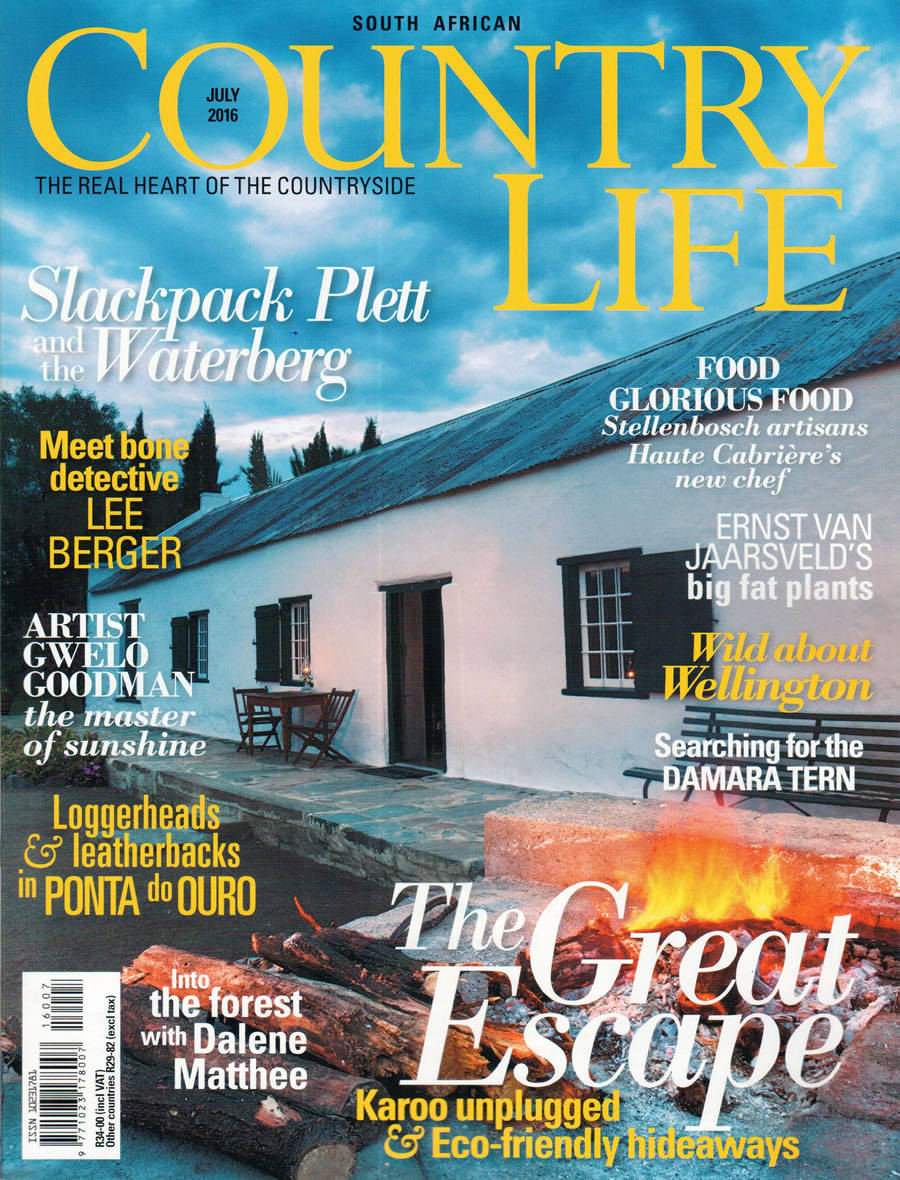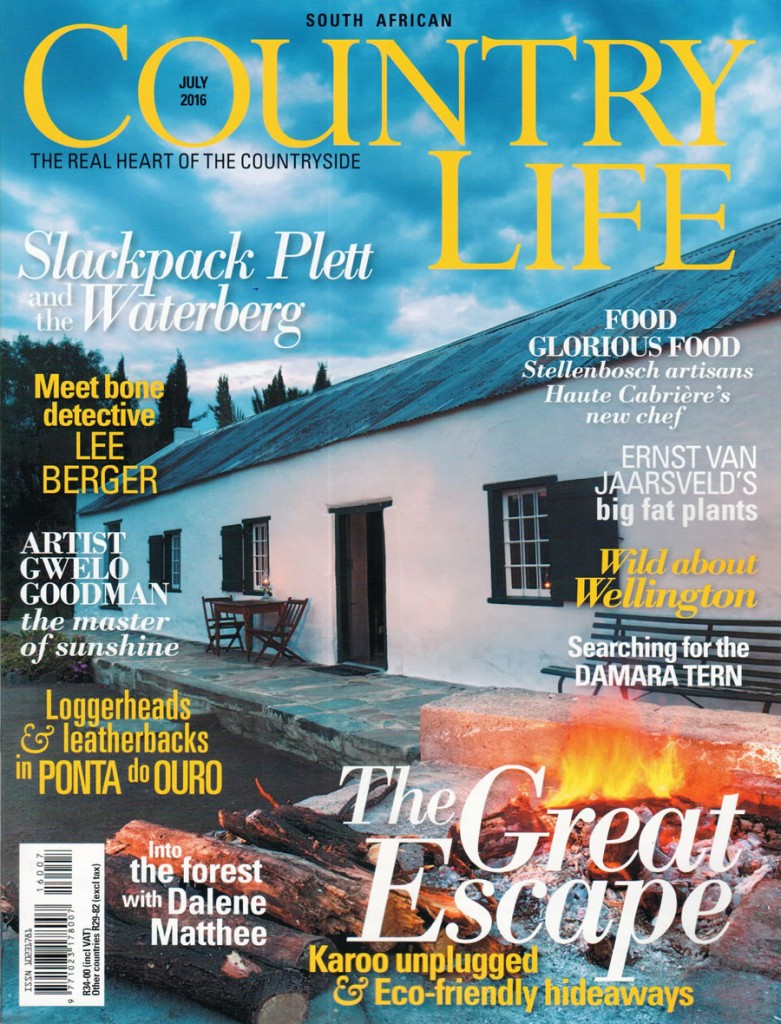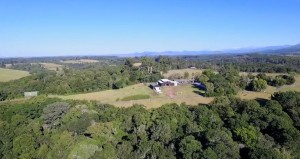
Dale Morris dons his hiking boots and hits the slackpack trail for three days of walking, riding and living the good life bar none around Plettenberg Bay…
 As the years advance and my body morphs inexorably towards a state of greater corpulence, I have come to truly appreciate slackpack trails. Generally, your heavy baggage is transported for you, accommodation is in nice places with rooms and roofs, rather than in damp huts and tents, and you are fed.
As the years advance and my body morphs inexorably towards a state of greater corpulence, I have come to truly appreciate slackpack trails. Generally, your heavy baggage is transported for you, accommodation is in nice places with rooms and roofs, rather than in damp huts and tents, and you are fed.
But that’s not to say they’re always a walk in the park. The trails themselves can be long and exhausting even without a backpack, and this can end up excluding many folk who otherwise would love to roam.
Now comes something new, The Plett Trail – a combination multi-day hike, horse ride, and vehicular route around the Plettenberg Bay area that comprises moderate distances, upmarket dining, superb accommodation, and best of all, lots of delicious wine.
Over a bottle of local wine and a meal of oxtail stew, enjoyed on a patio decorated with African and Asian bric-a-brac, I met the other hikers, six of us in all, at Emily Moon, a delightful, luxurious lodge overlooking the snaking Bitou River. It’s also where I met Colin Wylie, the man who was to be our guide for the next three days of indulgent exploration.
“It all starts tomorrow,” he told us as we finished our fourth (was it the fifth?) glass of Merlot, followed by a decadent chocolate mousse. “But don’t worry. It’s not a very long trek. Enjoy your drinks and dessert and go get a good night’s rest.”
Which is precisely what we did. My wife and I woke for breakfast at 08h00, slightly hungover, but a salmon breakfast with a selection of cheese and some freshly ground coffee helped banish the babalaas. We were taken by minibus shuttle to Keurbooms Beach to start the first leg of the trail, a ten kilometre stroll along one of the most beautiful stretches of coastline on the Garden Route.
Oystercatchers welcomed us, tiptoeing between rocks and spires, pecking at shellfish and ‘tweeping’ like battery-operated children’s toys. Noisy gulls wheeled overhead like grey and white kites. “They were once almost extinct, these oystercatchers,” Colin told us as we took in the surrounding views. “But they have made a comeback thanks to conservation efforts.”
Away to the west we could see the white houses of Plettenberg Bay, framed by a cobalt ocean and the craggy walls of Robberg Nature Reserve. Directly behind us, forested cliffs soared above a beach of sand and stone and soulful solitude. There was no one else around.
The walk for this first morning took us eastwards along fisherman paths to pebbly coves, past craggy islets and across wide sweeping beaches. The flowers were out in profusion, the fynbos pretty and the sea fresh and so blue. There was a bit of rock hopping to be done from time to time, and the occasional bit of surge threatened to wet our feet but, by and large, the walking was easy.
Colin, a naturalist, would point out animals and plants and significant geography along the way, giving us plenty of information and entertaining stories. “These are ancient shell middens” he told us, as we clambered over mounds of castaway molluscs. “They date back hundreds if not thousands of years. Maybe even more.”
I picked up a periwinkle and thought about how the world had changed since this shell had first been cast away by a Strandloper. But this particular stretch of coast had hardly changed at all. “It’s mostly nature reserve here,” said Colin. “That’s why it’s so quiet and undeveloped.”
Later, as tummies began to rumble, we ascended from the beach through a forest of milkwoods to the manicured grounds of Forest Hall Estate, our lunch stop for the day. There, a colonial-style swimming pool was surrounded by manicured lawns and stately oaks. “Take a swim,” implored Colin, but we passed for fear of leaving a sunblock slick upon the glittering surface. “This is also where you can bow out if you’ve done enough hiking for the day,” he told us.
Because The Plett Trail is a series of loops and shortish hikes it’s always possible to call in the shuttle bus and make a quick getaway at almost any point in the day. But we all chose to continue and, after a break and a snack, off we went to Nature’s Valley via a series of forested paths with views of the ocean and the nearbyTsitsikamma Mountains.
The only ‘drama’ of the day came when we reached the shores of the stunningly beautiful Salt River estuary.“It’s a bit deeper than I predicted,” said Colin as he waded across up to his neck “But at least there’s no current.” Usually, if you get the tides right, you can cross with no more than wet knees. However, we had dilly-dallied too long and now had to swim. But it was great fun and nobody lost a camera, cellphone or relative.
The day’s walk ended an hour or so later at Nature’s Valley, an oasis of homes surrounded by mountains, forests, lakes and beaches, in the Garden Route National Park. It’s also where the legendary Otter Trail ends. There, we were picked up by our shuttle and whisked off to our digs for the night, Trogon House – a superb lodge of glassy chalets, wooden walkways and expansive decks, hidden under the boughs of a dense, mature forest.
After a long soak in a big hot bath, we assembled in the lounge for a slide presentation from local bird expert Mike Bridgeford, about why Plett should be on every twitcher’s bucket list. “We have numerous habitats from wetlands to forests,” he told us. “That means a lot of different birds.”
Almost 40 per cent of South Africa’s 846 species can be found around Plett, and there are eight true endemics, which amounts to 45 per cent of the country’s total. And every single fynbos species can be encountered. “It’s a birder’s hotspot,” Mike told us. “I hope you find lifers on this hike of yours.”
Dinner that evening was superb, again with some of the extensive selection of locally produced boutique wines. Four or five bowls of fish later, I nodded off to sleep to the sound of owls and nightjars calling from the forest.
The following morning found us nervously perched in saddles. “We’re all incompetent,” I answered, when Debbie Fermor, proprietor of Hog Hollow Horse Trails, enquired after our horse-riding experience. Some of us had never been on a horse before. “Not to worry” she said with a smile. “Most of the riders we get here are novices, and our horses are ever so gentle.”
I was on Ginger, a russet creature that quickly assessed me, and found me wanting. Not a single command, kick or pull of the reigns had the slightest effect on him, but he knew the route like the back of his hooves so, in the end, it really didn’t matter that I had no control. He pulled into position behind my wife, whose mount was a large, shiny, black beast that suffered from flatulence.
It was a most fragrant and pleasant ride that morning as we ambled through farmland meadows and patches of indigenous forests. No one fell off and, because of the soporific pace, there were no abrasions to the calves and nothing was bruised and battered. What a lovely way to ‘walk’ a trail, I thought, and things got even better when we sauntered through the gates of Newstead Vineyards at The Crags above Plettenberg Bay for lunch.
Sue Lund, owner of the award-winning estate, had set a table for us, brimming with delectable nibbles and cold meats, cheeses and salmons. We even had a full-on wine tasting session of various bubblies, blends, reds and crisp whites, all locally produced on the estate.
Now, far be it from me to promote drunk driving of any sort, but my mother raised me never to spit in public. So rather than simply ‘taste’ the wine on offer, I drank every last drop that was proffered. So did my wife. Afterwards, we were hoisted back into the saddle by Debbie’s staff, and there we sat, like floppy pickled fish in a pleasant haze, moseying through polo fields and pretty wine estates. Thank heavens for Ginger’s autopilot setting.
As the sun sank, we clip-clopped down leafy pathways to the very posh Kurland polo estate and hotel, also at The Crags, and I felt for all the world like a drunken lord from Downtown Abbey or some such period drama. I half expected to see a pack of faithful beagles race out to meet me. Tally-ho!
The surroundings and grounds were oh-so colonial; white gables and country mansions, shaded by the branches of ancient oaks. There were expensive-looking horses in nice jackets in paddocks that resembled golfing greens, and there were ponds with carp, and rose gardens and whatnot. I even spied a cake display cabinet on the veranda of the main house, and instantly relieved it of its burden of scones.
Chamber music and string quartets played melodies in my mind as we settled into our grand accommodation for the night. That evening we dined in a colonial-style restaurant on petite steaks and fancy puddings in front of a roaring fire and paintings of stern-looking ancestors who glared at us from their ornate frames.
The third and final day took us, on foot, up to the slopes of the Tsitsikamma Mountains, through pine plantations and sections of lush indigenous forest. It was quite an uphill schlep at first, especially with a bellyful of ‘full English’ breakfast and a glass or two of bubbly. But it wasn’t long before we were walking along a level crest with views across the sprawling Kurland estate and beyond to the ocean and Plettenberg Bay.
Colin called out some rare and endemic birds for us to see, including the rather plain but ever so tuneful Victorin’s Warbler. “That’s one of the species real birders go nuts for,” said Colin, when I failed to display excitement at what, to me, was naught but a drab, brown, sparrowy thing.
But not to be discouraged, he continued for the rest of the morning, showing us insects and all sorts of birds and interesting flowers in the fynbos.
We drank from bubbling brooks and strolled down old logging roads and paths, and it wasn’t long before lunchtime was upon us and we found ourselves ambling downhill and through the gates of the Redford House private nature reserve.
Clive and Colleen Noble, owners of a historic country mansion on the property, had baked us a hearty lunch of pie and cake before we were shown to a lovingly restored farm cottage, our accommodation for the night. There were various options on the table for the rest of that afternoon. We could take art lessons in Clive’s studio or continue hiking down to the nearby Whisky Creek Nature Reserve.
Colin also offered to take us birding, but we gave in to lassitude and instead stayed at home and listened to Colleen and Clive tell stories from the past. Both are accomplished historians, naturalists and talkers of note, and it was a charming experience to sit in their home and have them regale us at their hearth. And of course there was plenty of local wine.
It was a splendid close to our trail, and we came away with memories of walking, riding, magnificent landscapes, plenty of food and local wine, and the people of the area who made the journey so special.
And best of all, unlike after most multi-day hikes, we suffered no blisters or aching old joints. It was slackpacking at its very best.
The Bigger Picture
- The three-day Plett Trail is just the first leg of a ten-day odyssey incorporating a community trail (highlighting the local Griqua culture) the Robberg Nature Reserve, and various mountain, coastal, forest and wetland locations.
- There are visits to important palaeontology sites, guest speakers in the evenings, an emphasis on birding and, perhaps most importantly of all, a great deal of wine tasting at some of the 16 wine estates in the area.
- You choose to do the whole route, or just certain portions, and can hop in and out as you please. Visit www.plett-tourism.co.za for more info.


















